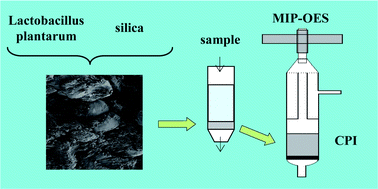Preconcentration of selenium by living bacteria immobilized on silica for microwave induced plasma optical emission spectrometry with continuous powder introduction
Abstract
The analytical potential of living bacteria Lactobacillus plantarum for the preconcentration of selenium from


 Please wait while we load your content...
Please wait while we load your content...